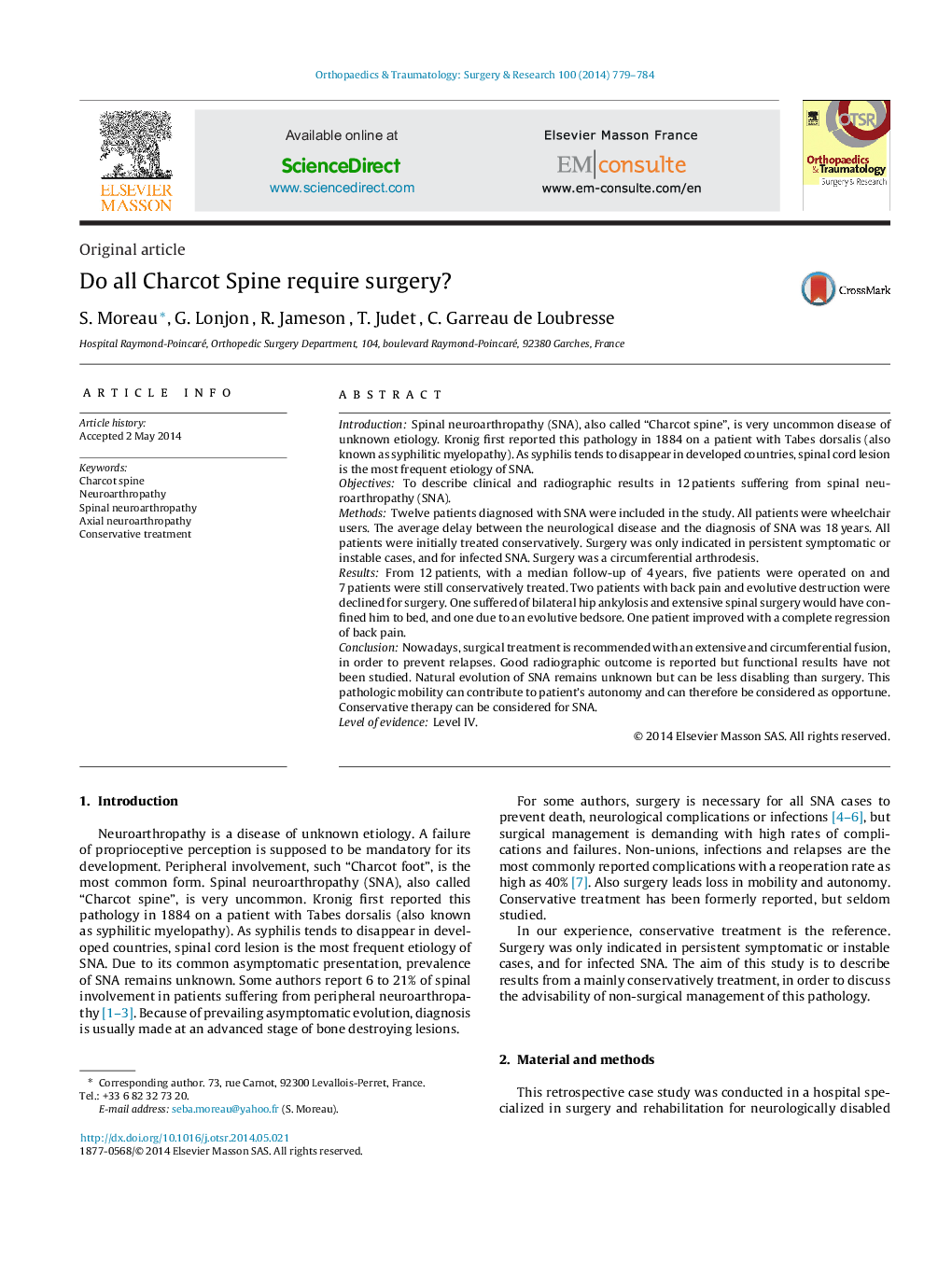| Article ID | Journal | Published Year | Pages | File Type |
|---|---|---|---|---|
| 4081412 | Orthopaedics & Traumatology: Surgery & Research | 2014 | 6 Pages |
IntroductionSpinal neuroarthropathy (SNA), also called “Charcot spine”, is very uncommon disease of unknown etiology. Kronig first reported this pathology in 1884 on a patient with Tabes dorsalis (also known as syphilitic myelopathy). As syphilis tends to disappear in developed countries, spinal cord lesion is the most frequent etiology of SNA.ObjectivesTo describe clinical and radiographic results in 12 patients suffering from spinal neuroarthropathy (SNA).MethodsTwelve patients diagnosed with SNA were included in the study. All patients were wheelchair users. The average delay between the neurological disease and the diagnosis of SNA was 18 years. All patients were initially treated conservatively. Surgery was only indicated in persistent symptomatic or instable cases, and for infected SNA. Surgery was a circumferential arthrodesis.ResultsFrom 12 patients, with a median follow-up of 4 years, five patients were operated on and 7 patients were still conservatively treated. Two patients with back pain and evolutive destruction were declined for surgery. One suffered of bilateral hip ankylosis and extensive spinal surgery would have confined him to bed, and one due to an evolutive bedsore. One patient improved with a complete regression of back pain.ConclusionNowadays, surgical treatment is recommended with an extensive and circumferential fusion, in order to prevent relapses. Good radiographic outcome is reported but functional results have not been studied. Natural evolution of SNA remains unknown but can be less disabling than surgery. This pathologic mobility can contribute to patient's autonomy and can therefore be considered as opportune. Conservative therapy can be considered for SNA.Level of evidenceLevel IV.
